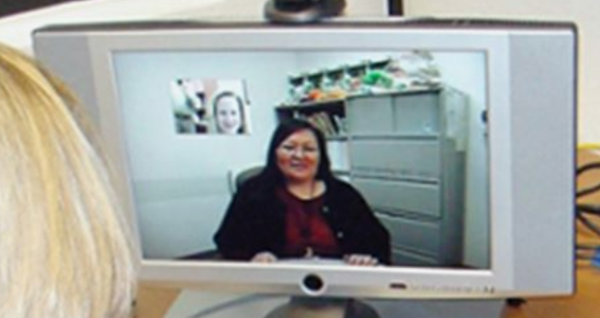
- Details
- By Native News Online Staff
ROCKVILLE, Md. — Patients who use the Indian Health Service (IHS) system can now have an appointment with a healthcare provider from the luxury of their own homes.
IHS today launched expanded telehealth service across its federal facilities. Telehealth allows patients and health-care providers to connect via phone and computer, reducing risk of infection for patients as well as providers and others in waiting rooms and emergency departments.
The current COVID-19 pandemic reminds us how important it is to be able to reach your healthcare team,” said Rear Adm. Michael D. Weahkee, IHS principal deputy director. “Telehealth will further protect our patients and employees by expanding services and increasing access to care, while doing our part to help stop the spread of COVID-19.”
To build comfort level and security purposes, IHS service units around the country and their clinicians must obtain verbal consent from patients who participate electronically via a telehealth appointment. Health care providers must verify the patient’s identity at the start of each session and are not authorized to record the encounter.
On March 27, IHS issued guidance that allowed clinicians to use certain additional, non-public facing audio or video communications technologies to augment all clinical activities related to providing care to patients during the COVID-19 public health emergency.
This applied to telehealth provided for any clinical reason, regardless of whether the telehealth service is related to the diagnosis and treatment of health conditions related to COVID-19.
Telehealth also gives providers access to services from locations other than hospitals and clinics, as in the case of self-quarantined clinicians. Providers can continue to practice medicine and remain available to their patients. They can also consult with their colleagues across the Indian health system.
The new service was tested at six IHS sites in Oklahoma City and on the Navajo Nation.
IHS is using the Cisco Meeting system and has the ability to share lessons learned. IHS then began training IHS employees across the agency on how to use the system. Cisco Meeting is a secure system that encrypts audio and video communications. IHS recognizes the importance of protecting the personally identifiable information and has built a robust program to safeguard this information.
The Cisco Meeting infrastructure is already used for telehealth in IHS, most commonly by the Telebehavioral Health Center of Excellence as well as the Albuquerque, Billings and Great Plains Areas.
The Cisco Meeting infrastructure is already used for telehealth in IHS, most commonly by the Telebehavioral Health Center of Excellence as well as the Albuquerque, Billings and Great Plains Areas.
How to help Native News Online: Send us news. Sign up for our daily enewsletter. Follow us on Facebook and Twitter. Share our articles. You can also donate to Native News Online here. Most importantly, take care of yourself. Megwetch.
More Stories Like This
Native News Weekly (August 25, 2024): D.C. BriefsUS Presidents in Their Own Words Concerning American Indians
Native News Weekly (December 14, 2025): D.C. Briefs
Wounded Knee Massacre Site Protection Bill Passes Congress
Two Murdered on Colville Indian Reservation
Help us defend tribal sovereignty.
At Native News Online, our mission is rooted in telling the stories that strengthen sovereignty and uplift Indigenous voices — not just at year’s end, but every single day.
Because of your generosity last year, we were able to keep our reporters on the ground in tribal communities, at national gatherings and in the halls of Congress — covering the issues that matter most to Indian Country: sovereignty, culture, education, health and economic opportunity.
That support sustained us through a tough year in 2025. Now, as we look to the year ahead, we need your help right now to ensure warrior journalism remains strong — reporting that defends tribal sovereignty, amplifies Native truth, and holds power accountable.
 The stakes couldn't be higher. Your support keeps Native voices heard, Native stories told and Native sovereignty defended.
The stakes couldn't be higher. Your support keeps Native voices heard, Native stories told and Native sovereignty defended.
Stand with Warrior Journalism today.
Levi Rickert (Potawatomi), Editor & Publisher

